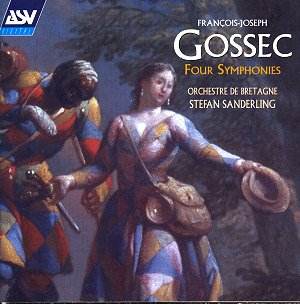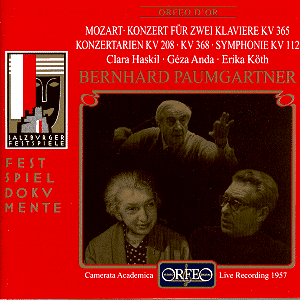 Composer: François-Joseph Gossec
Composer: François-Joseph Gossec
Works: Four Symphonies
Performers: Orchestre de Bretagne, Stefan Sanderling (conductor)
Recording: Recorded Rehearsal Hall, Rennes, July 2000
Label: ASV CD DCA 1123 [66.03]
François-Joseph Gossec, a pivotal figure in the evolution of orchestral music during the latter half of the 18th century, stands as a testament to the blending of Germanic and Italianate influences in a distinctly French context. His prolific output of symphonies, numbering around fifty, reflects the transitional period of the Classical style, where the structural rigor of the Mannheim school meets the lyrical expressiveness characteristic of Italian music. This recording featuring four of his symphonies offers a compelling overview of his orchestral style, revealing a composer who, while perhaps overshadowed by contemporaries, merits greater recognition for his contributions to symphonic form.
Stefan Sanderling and the Orchestre de Bretagne navigate the intricacies of Gossec’s orchestration with commendable finesse. The Symphony in C, Brook 85, opens with a grand rhetorical gesture, establishing a robust thematic presence that, while not fully sustained throughout the work, sets a precedent for the lyrical explorations to follow. The ensemble’s articulation of the opening movement’s themes demonstrates a keen understanding of Gossec’s stylistic nuances, though some subsequent movements, while charming, tend to dissipate into mere decorum rather than elevate to the level of profound musical discourse. The Larghetto Siciliana from Symphony No 1 in B flat exemplifies this, where flowing melodies are effectively supported by pizzicato strings, yet it lacks the dramatic interplay that might elevate its impact.
The Symphony in C, Brook 87, emerges as a standout on this disc, particularly due to its imaginative construction. The Minuetto and Trio, characterized by a thinning of texture to single voices, conveys a delicate balance of intimacy and sophistication. Sanderling’s interpretation here is especially noteworthy, as he allows the music’s inherent grace to shine through without unnecessary embellishment. Furthermore, the Presto finale showcases the exuberance of Gossec’s orchestral palette, employing Mannheim crescendos and drones that invigorate the thematic material. This movement stands as a testament to Gossec’s prowess, worthy of comparison to works by J.C. Bach, whose influence is palpable.
The recording quality is commendable, capturing the clarity of the orchestral textures and the nuanced dynamics of the performance. The engineering allows for a balanced soundstage, where individual instrumental lines can be discerned within the orchestral fabric, enhancing the listener’s appreciation of Gossec’s intricate writing. In contrast to Matthias Bamert’s recordings with the London Mozart Players, which also highlight Gossec’s charm but with a different interpretative lens, Sanderling’s approach is more focused on articulating the underlying structure of the works, providing a fresh perspective that is both engaging and enlightening.
Gossec’s symphonies, particularly the Symphony in C, Brook 87, emerge from this recording as significant contributions to the orchestral repertoire, deserving of attention from both scholars and enthusiasts of Classical music. The combination of Sanderling’s insightful direction and the vibrant playing of the Orchestre de Bretagne brings forth the distinctive qualities of Gossec’s music, making this disc a valuable addition to the catalog of Classical recordings. The overall impression is one of an artist whose works, while perhaps marginalized in the broader narrative of the Classical canon, reveal a rich tapestry of influence and innovation that continues to resonate.



